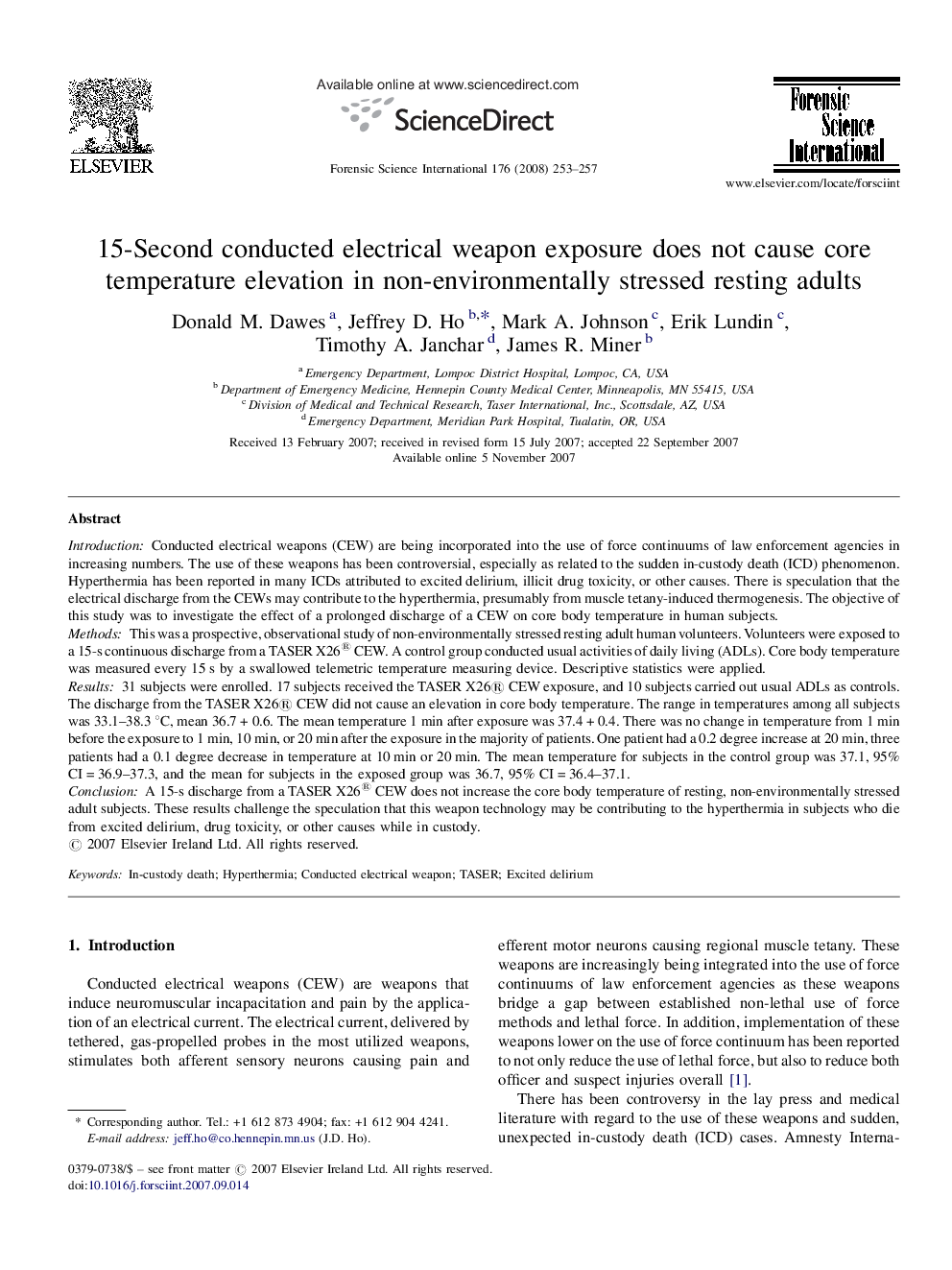| کد مقاله | کد نشریه | سال انتشار | مقاله انگلیسی | نسخه تمام متن |
|---|---|---|---|---|
| 97551 | 160498 | 2008 | 5 صفحه PDF | دانلود رایگان |

IntroductionConducted electrical weapons (CEW) are being incorporated into the use of force continuums of law enforcement agencies in increasing numbers. The use of these weapons has been controversial, especially as related to the sudden in-custody death (ICD) phenomenon. Hyperthermia has been reported in many ICDs attributed to excited delirium, illicit drug toxicity, or other causes. There is speculation that the electrical discharge from the CEWs may contribute to the hyperthermia, presumably from muscle tetany-induced thermogenesis. The objective of this study was to investigate the effect of a prolonged discharge of a CEW on core body temperature in human subjects.MethodsThis was a prospective, observational study of non-environmentally stressed resting adult human volunteers. Volunteers were exposed to a 15-s continuous discharge from a TASER X26® CEW. A control group conducted usual activities of daily living (ADLs). Core body temperature was measured every 15 s by a swallowed telemetric temperature measuring device. Descriptive statistics were applied.Results31 subjects were enrolled. 17 subjects received the TASER X26® CEW exposure, and 10 subjects carried out usual ADLs as controls. The discharge from the TASER X26® CEW did not cause an elevation in core body temperature. The range in temperatures among all subjects was 33.1–38.3 °C, mean 36.7 + 0.6. The mean temperature 1 min after exposure was 37.4 + 0.4. There was no change in temperature from 1 min before the exposure to 1 min, 10 min, or 20 min after the exposure in the majority of patients. One patient had a 0.2 degree increase at 20 min, three patients had a 0.1 degree decrease in temperature at 10 min or 20 min. The mean temperature for subjects in the control group was 37.1, 95% CI = 36.9–37.3, and the mean for subjects in the exposed group was 36.7, 95% CI = 36.4–37.1.ConclusionA 15-s discharge from a TASER X26® CEW does not increase the core body temperature of resting, non-environmentally stressed adult subjects. These results challenge the speculation that this weapon technology may be contributing to the hyperthermia in subjects who die from excited delirium, drug toxicity, or other causes while in custody.
Journal: Forensic Science International - Volume 176, Issues 2–3, 7 April 2008, Pages 253–257